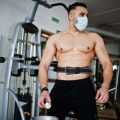Introduction to Breathing Exercises in Rehabilitation
Breathing exercises are simple but powerful techniques used to help people manage and improve their lung and heart health. In the United States, these exercises have been part of cardiac (heart) and pulmonary (lung) rehabilitation programs for decades. They are often taught alongside other therapies like physical activity and education to help patients recover from conditions such as heart attacks, chronic obstructive pulmonary disease (COPD), asthma, or after major surgeries.
What Are Breathing Exercises?
Breathing exercises are structured ways of controlling how you breathe in and out. The main goal is to strengthen the muscles involved in breathing, increase oxygen intake, and help remove carbon dioxide more efficiently. These techniques can be as simple as deep belly breathing or as specific as pursed-lip breathing, which is often used for people with COPD.
Common Types of Breathing Exercises in Rehab Programs
| Exercise Name | How It Works | Typical Use in Rehab |
|---|---|---|
| Diaphragmatic Breathing | Focuses on expanding the belly while inhaling | Improves lung efficiency and reduces stress |
| Pursed-Lip Breathing | Inhale through the nose, exhale slowly through pursed lips | Helps control shortness of breath, especially in COPD patients |
| Inspiratory Muscle Training (IMT) | Uses special devices to strengthen breathing muscles | Aids recovery after heart or lung surgery, increases stamina |
| Box Breathing | Breathe in, hold, breathe out, hold—all for equal counts | Reduces anxiety and helps focus during rehab exercises |
The History of Breathing Exercises in U.S. Rehab Programs
The use of breathing exercises in American rehab started becoming popular in the mid-1900s when doctors noticed that patients recovering from heart attacks or lung diseases benefited from learning how to breathe better. Over time, research confirmed that these exercises could reduce symptoms like shortness of breath and fatigue, speed up recovery, and improve overall quality of life. Today, nearly every cardiac and pulmonary rehab center across the U.S. includes some form of breathing training as a standard part of their care plans.
2. Scientific Evidence Supporting Breathing Exercises
A Look at the Research
In the United States, breathing exercises have become a recognized part of both cardiac and pulmonary rehabilitation programs. Researchers and clinicians are interested in how these techniques can help people with heart or lung issues live better, healthier lives. Over the past decade, many studies have looked at how controlled breathing—sometimes called diaphragmatic breathing or pursed-lip breathing—can make a difference for patients.
Key Studies and Findings
| Study | Population | Main Outcome | Key Findings |
|---|---|---|---|
| Cochrane Review (2019) | People with Chronic Obstructive Pulmonary Disease (COPD) | Lung Function & Quality of Life | Breathing exercises improved breathlessness and reduced fatigue in daily activities. |
| American Heart Association Guidelines (2020) | Cardiac Rehab Patients | Exercise Tolerance & Recovery | Controlled breathing was linked to lower stress and better exercise performance during rehab. |
| Journal of Cardiopulmonary Rehabilitation (2021) | Post-Heart Surgery Patients | Anxiety & Oxygen Levels | Paced breathing helped reduce anxiety and improved oxygen levels during recovery. |
How Do Breathing Exercises Help?
Most research agrees that breathing exercises work by helping people use their lungs more efficiently and by calming the nervous system. For folks with heart problems, these exercises can lower blood pressure and heart rate. For those with lung conditions like COPD or asthma, they make it easier to get air in and out, which reduces shortness of breath.
The Medical Consensus in the U.S.
The American Thoracic Society and American Heart Association both recommend adding breathing exercises to rehab programs for eligible patients. Doctors, respiratory therapists, and physical therapists often include these techniques as part of a bigger plan to improve heart and lung health. While results can vary from person to person, most experts agree that breathing exercises are low-risk and can offer real benefits when practiced regularly as part of a supervised program.

3. Clinical Benefits for Cardiac and Pulmonary Patients
How Breathing Exercises Help in Everyday Life
Breathing exercises are more than just deep breaths—they are an important part of cardiac and pulmonary rehabilitation programs across the United States. For people living with heart or lung conditions, these exercises can offer real, noticeable improvements in daily life.
Improved Lung Function
Many patients with chronic obstructive pulmonary disease (COPD), asthma, or recovering from heart surgery experience shortness of breath and low energy. Breathing exercises, such as pursed-lip breathing and diaphragmatic breathing, help strengthen respiratory muscles and improve oxygen exchange. This means patients can often walk farther, do more physical activities, and feel less winded after climbing stairs.
Common Breathing Exercises Used in Rehab
| Exercise Name | Main Benefit | Typical Use Case |
|---|---|---|
| Pursed-Lip Breathing | Reduces shortness of breath | COPD, after exercise, anxiety relief |
| Diaphragmatic Breathing | Strengthens core breathing muscles | Pulmonary rehab, post-cardiac surgery |
| Box Breathing (Four-Square) | Promotes relaxation & stress control | Anxiety management during rehab sessions |
Enhanced Quality of Life
Participating in regular breathing exercise routines has been shown to boost quality of life for many American patients. People report better sleep, more confidence doing daily tasks like shopping or gardening, and less dependence on rescue inhalers or supplemental oxygen.
Everyday Benefits Reported by Patients:
- Easier to keep up with grandkids or family activities
- Less fatigue when running errands or socializing
- Greater ability to return to hobbies like golf or walking groups
- Lower anxiety about sudden breathlessness episodes
Reduced Symptoms and Fewer Hospital Visits
Breathing exercises can help manage symptoms such as coughing, wheezing, and chest tightness. Many rehab programs have found that patients who practice these techniques regularly need fewer emergency room visits and hospitalizations because they can better handle flare-ups at home.
Summary Table: Practical Benefits for Patients in the U.S.
| Benefit Area | Description/Impact |
|---|---|
| Lung Function | Breathe deeper, less shortness of breath during activity |
| Daily Living Activities | Easier movement at home and in public places; more independence |
| Mental Well-being | Reduced stress and anxiety linked to breathlessness episodes |
| Healthcare Utilization | Fewer ER visits and hospital stays due to improved self-management skills |
Breathing exercises are a simple yet powerful tool in the journey to recovery for Americans facing heart and lung challenges. By making them part of everyday routines, many patients notice big changes that matter most—feeling better and living life more fully.
4. Common Types of Breathing Exercises Used in the U.S.
Description of Frequently Recommended Techniques
Breathing exercises are a key part of cardiac and pulmonary rehabilitation programs in the United States. These techniques help improve lung function, increase oxygen delivery, and reduce shortness of breath. They are often taught by respiratory therapists and used at home or in clinical settings. Below are some of the most common breathing exercises recommended for patients recovering from heart or lung conditions.
Diaphragmatic Breathing (Belly Breathing)
This technique focuses on strengthening the diaphragm, which is the main muscle used for breathing. Diaphragmatic breathing helps people take deeper breaths by engaging the lower lungs rather than relying on shallow chest breathing.
How to Practice Diaphragmatic Breathing:
- Sit or lie down comfortably with your shoulders relaxed.
- Place one hand on your chest and the other on your belly.
- Breathe in slowly through your nose, letting your belly rise as you fill your lungs.
- Exhale slowly through pursed lips, feeling your belly fall.
- Repeat several times, focusing on moving your belly more than your chest.
Applications: Diaphragmatic breathing is especially helpful for people with COPD, heart failure, or those recovering from surgery. It can help decrease work of breathing and improve relaxation.
Pursed-Lip Breathing
Pursed-lip breathing is designed to slow down exhalation and keep airways open longer. This technique can make it easier to breathe, especially during activities like walking or climbing stairs.
How to Practice Pursed-Lip Breathing:
- Breathe in slowly through your nose for two counts.
- Purse your lips as if you were going to whistle.
- Breathe out gently through pursed lips for four counts, taking twice as long as you did inhaling.
- Repeat as needed, especially when feeling short of breath.
Applications: This exercise is commonly recommended for people with chronic lung diseases such as emphysema or asthma. It helps prevent airway collapse and makes physical activity less tiring.
Other Popular Techniques
| Name | Description | Main Uses |
|---|---|---|
| Box Breathing (Square Breathing) | Breathe in for 4 counts, hold for 4, out for 4, hold for 4. Repeat several times. | Anxiety reduction; increasing focus; sometimes used before rehab sessions. |
| Segmented Breathing | Breathe in small segments (e.g., two small inhales) then exhale fully. Can be done while lying down or seated. | Lung expansion post-surgery; improving rib cage flexibility. |
| Cough Control Breathing | Breathe deeply using diaphragmatic or pursed-lip techniques before attempting to cough. | COPD flare-ups; clearing mucus without exhausting the patient. |
Choosing the Right Technique
The best breathing exercise depends on individual needs and medical conditions. A healthcare provider or rehab specialist will often personalize recommendations based on a patients diagnosis and daily challenges. Practicing these techniques regularly can make daily activities easier and support overall recovery in cardiac and pulmonary rehabilitation programs across the U.S.
5. Limitations and Considerations in Practice
Barriers to Effective Implementation of Breathing Exercises
While breathing exercises offer promising benefits for people going through cardiac and pulmonary rehabilitation, there are several barriers that can affect their success. Understanding these challenges is essential for healthcare providers and patients alike.
Common Barriers in Practice
| Barrier | Description | Examples in the U.S. Healthcare Context |
|---|---|---|
| Patient Adherence | Patients may struggle to stick with regular breathing exercises due to lack of motivation or busy schedules. | Work commitments, family responsibilities, or simply forgetting the routine. |
| Potential Risks | Certain breathing techniques might not be suitable for everyone, especially those with severe health issues. | Overexertion in advanced heart failure, dizziness, or anxiety during unfamiliar exercises. |
| Lack of Individualization | A one-size-fits-all approach may not address unique patient needs and health conditions. | Programs not tailored for cultural preferences, language barriers, or specific medical histories. |
| Healthcare Access Issues | Not all patients have equal access to rehabilitation services or follow-up care. | Lack of insurance coverage, transportation challenges, or living in rural areas. |
The Importance of Individualized Programs
In the American healthcare system, personalization is key. Each patient comes with a unique set of circumstances—medical history, lifestyle, and personal goals. It’s important for healthcare providers to design breathing exercise programs that fit each individual. This approach improves safety, encourages participation, and increases the chances of long-term success.
Considerations When Designing Breathing Exercise Programs
- Medical Evaluation: Regular assessments help ensure exercises are safe and appropriate for each patient.
- Cultural Sensitivity: Incorporating culturally relevant education and support can improve understanding and engagement.
- Education and Support: Simple instructions and consistent encouragement from rehab teams make a big difference in adherence.
- Accessibility: Offering remote options like telehealth or instructional videos helps reach more people, especially in underserved areas.
Key Takeaways for Providers and Patients
- Recognize that sticking to an exercise plan can be tough—ongoing encouragement matters.
- Watch out for warning signs like shortness of breath or chest pain during exercises—report these to your provider right away.
- If you’re a provider, tailor every plan to your patient’s abilities and lifestyle—not just their diagnosis.
- If you’re a patient, ask questions until you feel confident about what you’re doing at home.


